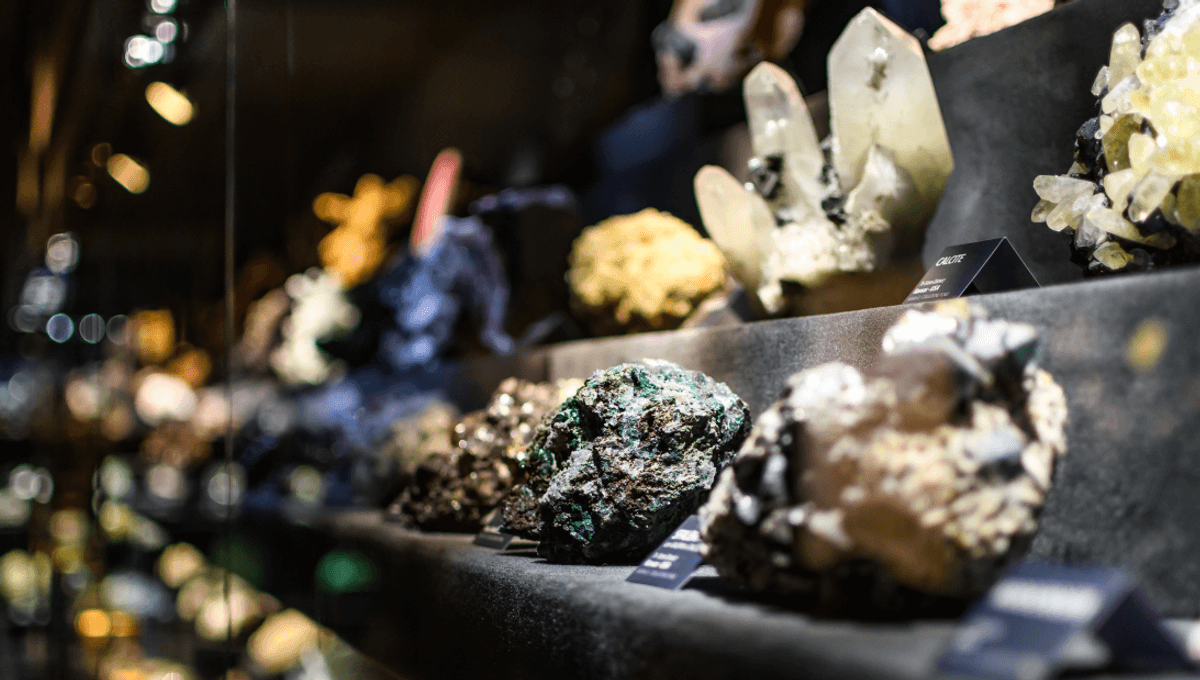
We humans are a bit magpie-ish when it comes to the environment, our eyes growing big and greedy when we spot shiny things sticking out of rocks. Take a walk down the mineralogy collection of any good natural history museum and your face will be aglow with the sparkle of minerals, crystals, and gemstones – but what’s the difference between the three?
It could be said that minerals are salt-of-the-earth, crystals are organized, and gemstones like to show off. Not very scientific, though, so let’s dive into the details.
What is a mineral?
Minerals are generally inorganic, naturally occurring solids (though we humans have had a stab at creating our own in the lab) that have a specific chemical composition and atomic structure.
Their ordered atomic arrangements are why most minerals have a crystal structure, as repeating units layer up. There are a few rare exceptions for solids that are considered minerals and have an amorphous (non-crystalline) structure. One way they can form is through rapid cooling which means they don’t develop in the repeated units that define true crystals, but it’s up for debate if you can technically have an “amorphous mineral“.
What is a crystal?
Crystals are characterized by their highly ordered atomic arrangements, forming as repeated units in what’s known as a crystal lattice, creating those pointy faceted protrusions we humans love. You can get a good idea of a crystal’s structure by looking closely at just a small piece of it, as the repeating units all follow the same structure. They’re not living, but scientists often describe them as “growing” because their development can be dependent on environmental conditions, their unique composition, and how much space they have.
What is a gemstone?
Gemstones are precious or semi-precious stones that have been cut and polished by humans for use in things like jewelry and research. Some gemstones are also minerals, such as that classic rock diamond, but there are some gemstones that aren’t classed as minerals. A fancy example is pearl, a popular choice in the jewelry industry. That’s because they contain the protein conchiolin, something that’s crucial to the formation of the pearl but is a biological material, so the pearl can’t be a mineral.
Some gemstones are crystals, such as amethyst, which is a variety of the mineral quartz and is often cut into gemstone form. Not all crystals get the gemstone treatment, however (just look at poor old common-as-muck salt), and as the current crystal trend well demonstrates, people are perfectly happy to enjoy crystals in their natural form.
In short, minerals are generally a naturally occurring inorganic solid; a crystal is a solid made up of repeating structural units; and gemstones are raw materials that have been adapted by humans for extra aesthetic appeal, but not all minerals and crystals make the cut. Seeking out these materials can be difficult and even deadly, but lab-grown precious stones are on the rise thanks to achievements like the world-first ruby grown from a “ruby seed”.
All “explainer” articles are confirmed by fact checkers to be correct at time of publishing. Text, images, and links may be edited, removed, or added to at a later date to keep information current.
Source Link: What's The Difference Between A Mineral, A Crystal, And A Gemstone?